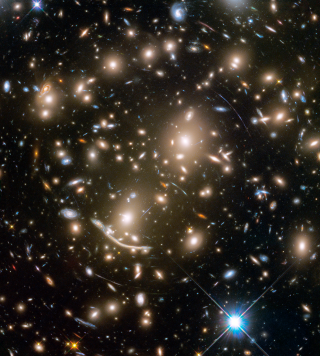Bibcode
Romero-Gómez, J.; Peletier, Reynier F.; Aguerri, J. A. L.; Mieske, Steffen; Scott, Nicholas; Bland-Hawthorn, Joss; Bryant, Julia J.; Croom, Scott M.; Eftekhari, F. Sara; Falcón-Barroso, Jesús; Hilker, Michael; van de Ven, Glenn; Venhola, Aku
Referencia bibliográfica
Monthly Notices of the Royal Astronomical Society
Fecha de publicación:
6
2023
Número de citas
21
Número de citas referidas
16
Descripción
Using very deep, high spectral resolution data from the SAMI Integral Field Spectrograph, we study the stellar population properties of a sample of dwarf galaxies in the Fornax Cluster, down to a stellar mass of 107 M⊙, which has never been done outside the Local Group. We use full spectral fitting to obtain stellar population parameters. Adding massive galaxies from the ATLAS3D project, which we re-analysed, and the satellite galaxies of the Milky Way, we obtained a galaxy sample that covers the stellar mass range 104-1012 M⊙. Using this large range, we find that the mass-metallicity relation is not linear. We also find that the [α/Fe]-stellar mass relation of the full sample shows a U-shape, with a minimum in [α/Fe] for masses between 109 and 1010 M⊙. The relation between [α/Fe] and stellar mass can be understood in the following way: when the faintest galaxies enter the cluster environment, a rapid burst of star formation is induced, after which the gas content is blown away by various quenching mechanisms. This fast star formation causes high [α/Fe] values, like in the Galactic halo. More massive galaxies will manage to keep their gas longer and form several bursts of star formation, with lower [α/Fe] as a result. For massive galaxies, stellar populations are regulated by internal processes, leading to [α/Fe] increasing with mass. We confirm this model by showing that [α/Fe] correlates with clustercentric distance in three nearby clusters and also in the halo of the Milky Way.
Proyectos relacionados

Huellas de la Formación de las Galaxias: Poblaciones estelares, Dinámica y Morfología
Bienvenida a la página web del g rupo de investigación Traces of Galaxy Formation. Somos un grupo de investigación amplio, diverso y muy activo cuyo objetivo principal es entender la formación de galaxias en el Universo de una manera lo más completa posible. Con el estudio detellado de las poblaciones estelares como bandera, estamos constantemente
Anna
Ferré Mateu

Evolución de Galaxias en Cúmulos
Las estructuras en el Universo, a todas las escalas de masa, se han formado de una forma jerárquica y principalmente producidas por fusiones de galaxias. Sin embargo, esta formación jerárquica de las galaxias está modulada por el entorno en el cual se crean y evolucionan. Mientras que las galaxias de campo presentan una evolución pasiva, los
Jairo
Méndez Abreu